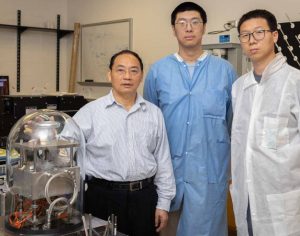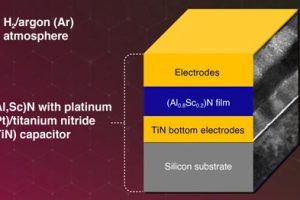
It is a high-entropy ‘Zintl’ alloy of the form YbxCa1-xMgyZn2-ySb2, for which the team devised a way to calculate the exact proportions by aiming for band convergence.
“It is normally difficult to get high performance from thermoelectric materials because not all of the electronic bands in a material contribute,” said director of the university’s superconductivity centre Zhifeng Ren. “It’s even more difficult to make a complex material where all of the bands work at the same time in order to get the best performance.”
He likens band conversion to many people lifting an object – if they are a similar height, the load is carried more evenly, said Ren.
The chosen material has four parent compounds made from five elements: ytterbium, calcium, magnesium, zinc and antimony. The calculations showed which combinations of the parent compounds could reach band convergence, and the best combination was turned into a device.
This was tested in a lab-made instrument, and found to remain stable for at least two years.

The calculation method is applicable to other potentially-thermoelectic multi-compound alloys, according to the university.
University of Houston worked with Rice University. Their work is described in the Science paper ‘Global band convergence design for high-performance thermoelectric power generation in Zintls‘
Image: University of Houston’s Zhifeng Ren (left), Xin Shi (centre) and Shaowei Song (right) with their lab-made energy conversion efficiency instrument.
 Electronics Weekly Electronics Design & Components Tech News
Electronics Weekly Electronics Design & Components Tech News

